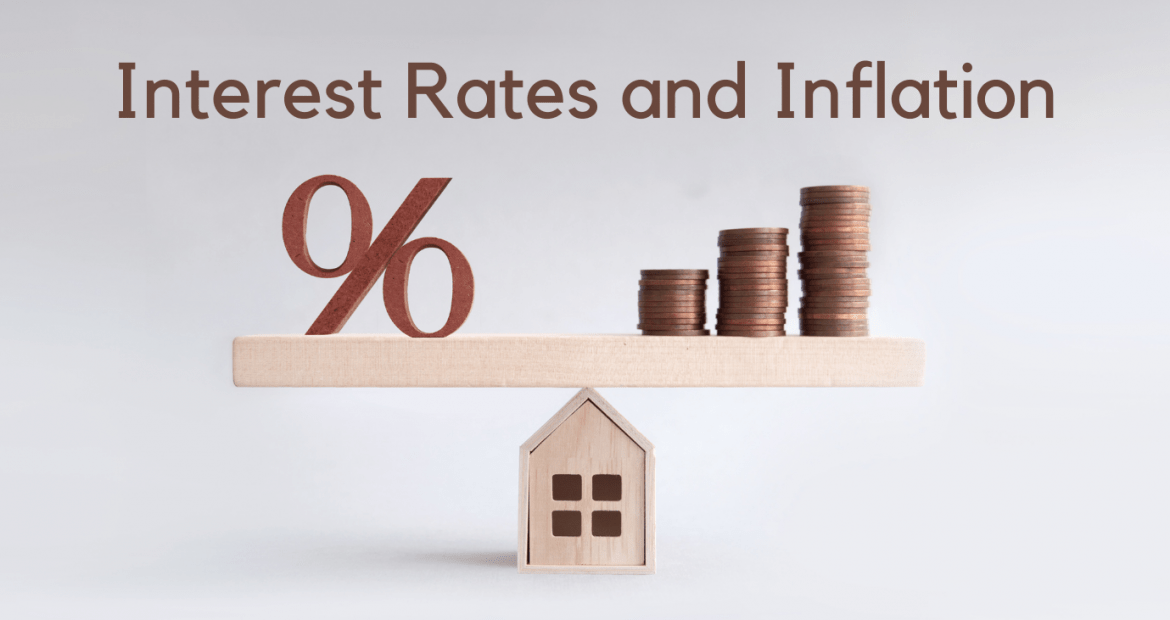- How effective is it to raise interest rates in order to tackle inflation, especially when it is cost-pushed?
Before delving into the effectiveness of rate hikes when faced with skyrocketing inflation, we need to review the definition of inflation, which means “the rate of increase in prices over a given period of time”. So what exactly causes this “increase in prices”? Simply put, there are two components of inflation: demand-pulled and cost-pushed.
Demand-pulled inflation occurs when too much money chases too few goods. In the perspective of the post-Covid economy, demand pull is caused by consumer demand for goods and services recovering, after having tightened their belts during the pandemic. In this case, producers are still struggling to restart pandemic-affected production lines and manage supply chain disruptions. The laws of supply and demand dictate that when demand increases faster than supply, prices rise and demand-pulled inflation occurs. In this case, the textbook central bank response is to raise interest rates. The effect of higher interest rates is to incentivize consumers to save their money for later instead of buying things now. Thus, demand moderates and the demand-pulled component of inflation slows.
The second component, cost-pushed inflation is harder for the central bank to pin down, compared to demand-pulled inflation caused by consumers spending more. In our current environment, the pandemic and geopolitical concerns have contributed much to cost-pushed inflation. Pandemic restrictions saw supply chain disruptions, as logistics chains were unable to function under strict lockdowns, thus leading to higher cost of transportation. The war in Ukraine has served to spike commodity prices due to Ukraine’s and Russia’s role as exporters of important raw materials such as oil, grain and industrial metals, that in turn push up producer costs. Seen in this manner, the effect of raising the interest rate is less clear (e.g. a rising interest rate would not directly lower oil prices). While there is an argument that less demand would allow suppliers to cut down on production and its associated costs, cost-pushed inflation (and indeed inflation in general) is sticky given that it takes time for production lines to normalize and commodity prices are usually locked in on a forward basis.
Therefore, the effectiveness of an interest hike to combat inflation revolves around the question: which component of inflation is more dominant? To understand this, let us compare the economic situation and rate hike path between Malaysia and the US. In the US, there is much urgency from the Federal Reserve (Fed) to raise interest rates with markets pricing up to 9 hikes in 2022. The reason for urgency is the demand-pull component. While sky-high US Consumer Price Index (CPI) numbers (March’22: +8.5% YoY) are undoubtedly affected by cost-pushed inflation such as higher prices at the pump, the US economic situation has allowed demand-pulled inflation to grow. Gross Domestic Product (GDP) growth has recovered, while the unemployment rate is declining close to pre-pandemic levels (Mar’22: 3.6%; 2019: 3.5%). As a result, private consumption has grown as US citizens (having regained employment post-pandemic) spend their wages which in turn drives demand-pulled inflation. Therefore, a hawkish Fed is to be expected as it raises rates quickly in order to moderate the consumption-driven component of inflation, by way of making credit harder to obtain (higher interest rates) and encouraging more savings.
In contrast, Malaysia’s economic situation saw a lagging economic recovery (negative GDP growth from 3Q’21 lockdowns) and slack in the labour market (unemployment rate Dec’21: 4.2%; pre-pandemic in 2019: 3.3%). This has led to muted consumption with Malaysian citizens unwilling to spend, which dampens the effect of demand-pull inflation. Furthermore, the weaker inflation outlook in Malaysia (Feb’22 CPI: +2.2% YoY) is attributable to significant price controls and subsidies that remain in place for essential goods and fuel (RON95). We note that subsidies differ from interest rates which are a monetary policy tool, which thus far has resulted in Bank Negara Malaysia (BNM) adopting a cautious approach towards hiking rates. In conclusion, we see that the US with stronger private consumption and a recovered economy seeks to moderate inflation with multiple rate hikes, while raising the interest rate is not as effective for Malaysia which mainly sees cost-push inflation from disrupted supply lines and higher input prices.
- How does a higher interest rate affect or help current market conditions and also the economy?
Aside from price stability, interest rate hikes will shape the financial conditions in their respective asset markets. For example, equity markets would react adversely to the prospect of higher interest rates as evidenced by lower stock market returns globally (S&P500: -7.30% Year-To-Date). However, raising interest rates may not necessarily be a bad sign as rate hikes are normally conducted when the economy is in good shape e.g. the US where private consumption and unemployment have largely recovered from the effects of the pandemic.
Riskier assets aside, “safer” classes such as fixed income are not immune to rising interest rates. The global bond market rout in 1Q22 reflected market anxiety about rising inflation expectations and the impact from ensuing interest rate hikes. However, we do note while the directional impact of a rising interest rate is similar, the quantum may differ between different countries. Of note, while Malaysia’s bond market saw yield curves rise in tandem with the global rout, the Malaysia yield curve in early 2022 was less volatile compared to the US despite an increasingly hawkish Fed and geopolitical tensions in Ukraine. The relative calm in Malaysian Government Securities (MGS) markets was largely underpinned by a cautious BNM (less imperative to hike rates) and Malaysia being somewhat insulated from commodity price shocks due to Malaysia’s status as a major commodity exporter of petroleum and palm oil.
However, the benefit of low interest rates cannot be maintained forever, since interest rates were initially slashed globally to combat pandemic effects, and the pandemic has already subsided. It is risky to maintain low interest rates for a prolonged period. For example, excess liquidity can lead to problems such as asset bubbles, whether in financial assets or real assets such as housing. Too keep interest rates low for too long would risk financial instability as cheaper credit results in a moral hazard situation where investors take on more risk than usual due to lower costs of borrowing. Therefore, raising interest rates can have the positive effect of increasing central bank credibility, an important factor for global investors. This in turn will have positive spillover effects on economic growth, as foreign investors would allocate capital towards countries with a credible central bank. Thus, the increase in Foreign Direct Investment (FDI) would serve to improve GDP growth and the future economic prospects of the country.
On the subject of capital flows, a country with a strong economy and rising interest rates will observe capital inflows, whereby investors invest in the country on the premise of getting higher returns. The opposite phenomenon, capital outflows may occur in Malaysia’s case for example as Malaysia’s interest rate hike path is slower than that of the US, thus reducing the yield premium of MGS over USTs which may lead investors to pull out from Malaysia.
For the layman, rising interest rates may bring benefits such as better returns on savings accounts or fixed-term deposits. This is especially important for the elderly demographic which are more vulnerable to financial volatility and requires a stable income stream. Furthermore, a country raising its interest rate tends to benefit from a strengthening currency, which would allow its citizens to enjoy a higher standard of living abroad as well as locally by spending less on imported goods.
Disclaimer
The information, analysis and opinions expressed herein are for general information only and are not intended to provide specific advice or recommendations for any individual entity. Individual investors should contact their own licensed financial professional advisor to determine the most appropriate investment options. This material contains the opinions of the manager, based on assumptions or market conditions and such opinions are subject to change without notice. This material has been distributed for informational purposes only and should not be considered as investment advice or a recommendation of any particular security, strategy or investment product. Information provided herein may include data or opinion that has been obtained from, or is based on, sources believed to be reliable, but is not guaranteed as to the accuracy or completeness of the information. No part of this material may be reproduced in any form, or referred to in any other publication, without express written permission. Opus Asset Management Sdn Bhd and its employees accept no liability whatsoever with respect to the use of this material or its contents.




